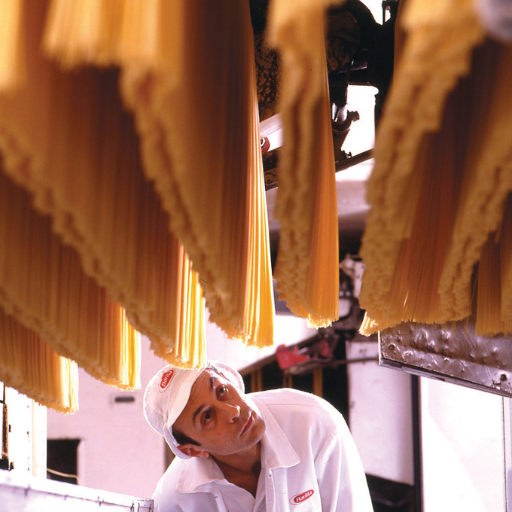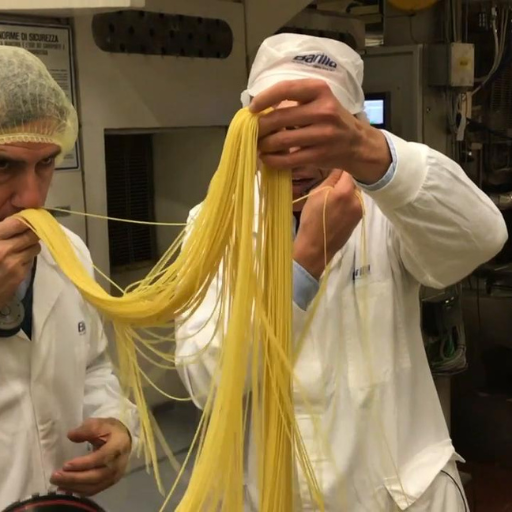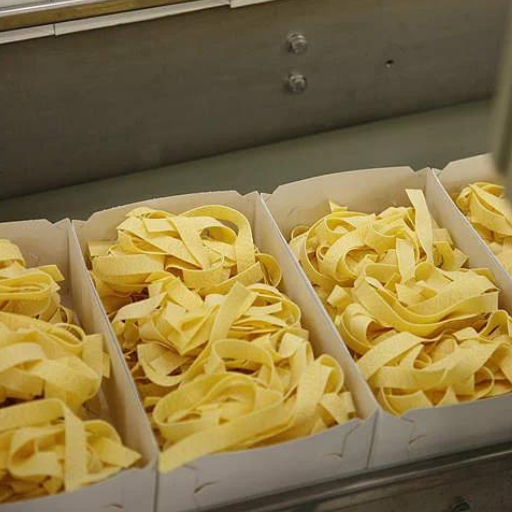When it comes to pasta, Barilla stands out as a name synonymous with quality and tradition. As the world’s largest pasta manufacturer, Barilla’s journey from its humble beginnings to its current position as a global leader in the pasta industry is nothing short of remarkable. This blog aims to take you on a fascinating tour through Barilla’s state-of-the-art production facility, delving into the intricate processes that ensure every piece of pasta maintains the company’s high standards. We will explore the history of Barilla, shedding light on how it has evolved over the years while staying true to its Italian roots. Join us as we uncover what makes Barilla pasta a kitchen staple in households around the world.
How is Barilla Pasta Made at the Largest Pasta Factory?
The Barilla Pasta Factory: The Route from Dough to Packaging
The journey of Barilla pasta starts with selection of high-quality durum wheat, sourced from trusted farmers. This wheat is meticulously cleaned and ground into semolina flour, which is then combined with water to create dough. The dough is kneaded and extruded through bronze dies, which gives the pasta its distinct texture and shape. After extrusion, the pasta is dried in controlled environments to ensure optimal moisture levels, preserving its quality and shelf life. Finally, the dried pasta goes through thorough inspection and packaging before it can be shipped out for customers worldwide.
How Important is Automation in Barilla’s Production Process?
Automation is fundamental in the production process at Barilla as it ensures efficiency, consistency and high standards of quality. The use of advanced robotics and computer controlled machinery brings precision during different spheres like kneading, extrusion drying or even packaging. All automated systems are monitored by skilled technicians to help maintain conditions within optimum levels while minimizing chances of human fault thereby increasing reliability on end products. Also, this automation allows for real-time data collection and analysis that leads to quick changes in production parameters hence facilitating continuous improvement within manufacturing processes. Thus, integration of automation guarantees that Barilla can satisfy global demand without compromising its artisanal character.
What Amounts of Pasta does Barilla Produce Each Day?
In a day, Barilla produces an unbelievable 1,200 tons of pasta making it the biggest producer in the world. This immense scale of production enables Barilla to meet the huge global demand hence ensuring people all over can consume their wide variety of pasta items they manufacture. Such impressive production capabilities result from company’s commitment towards quality and efficiency supported by advanced automation.
What Makes the Pedrignano Plant the Largest Pasta Factory in the World?
Barilla’s Operations Scale in Parma
The largest pasta factory in the world, which is located at Pedrignano, Parma, covers an impressive 120,000 square meters of land. The plant has 22 production lines that work day and night every single day to ensure continuous processes. Every day, the factory produces about 1,400 tons of pasta. One more crucial aspect of Pedrignano’s operations is the incorporation of advanced technology and automation that enhance production efficiency and maintain Barilla’s high-quality standards. Furthermore, its strategic position in Parma as a well-known Italian food hub enhances its logistics efficiencies allowing it to reach global markets with ease.
How Barilla’s Pedrignano Plant became World Number One Pasta Maker
To understand how Barilla’s Pedrignano plant became world number one pasta maker there are several key factors that underpin their success. Advanced technology and automation have been instrumental in ensuring consistent quality production whilst maximizing on efficiency. Also, its geographical setting in Parma- Italy- a renowned haven for rich food traditions allows for tapping into local expertise and resources. In addition commitment to sustainability and innovation sees to it that processes are eco-friendly but do not compromise quality. All these combined with Barilla ‘s passion for using superior ingredients or sticking to strict quality control measures makes Pedrignano the topmost pasta making facility globally.
What is the History Behind Barilla’s Pasta Production?
The Evolution of Barilla from 1877 to Today
Pietro Barilla started the journey of Barilla in 1877 with a small bakery in Parma, Italy. He put the first bricks for what would be one of the most well-known pasta brands in the world today. Initially, its business was focused on bread and pasta but that changed over time as they diversified their production and product range. By mid-twentieth century, Barilla had already transformed factory-based pasta production through introduction of sophisticated machine systems and modern process technologies designed to make it more efficient and valuable at quality wise. Many factories were built after World War II by Barilla to expand its market boundaries.
Through this period of time Barillas’ stance on sustainability was seen when they introduced pasta made from durum wheat semolina which has remained a standard among other companies producing similar products till date. Moreover, it was during these years that the company started becoming more concerned about environment leading them to engage some eco-friendly practices and technologies as well. Presently, despite being transformed into a family enterprise run by different members, yet always ensuring it perfectly complies with all contemporary customer wishes and environmental requirements while preserving an original recipe for success expressed through high quality standards; thereby evolving right from a small local bakery into a global leader in pasta manufacturing is an absolute guarantee of excellence, innovation and sustainable growth made by the company.
Who is Pietro Barilla and What is His Legacy?
Barillas founder is Pietro who opened their very first bread and pasta shop in Parme town in 1877 since then he had been known as such for his dedication towards creating top-quality pastas through inventive measures. This saw him take charge at barilla transforming it from a mere backstreet café into today’s giant pasta manufacturer widely embraced for using fine durum wheat semolina combined with advanced technological procedures to achieve best possible results. This passion has been passed down through the generations of his family making it a current leader in global pasta industry. This is a company that is renowned for its innovation as well as initiatives to sustain the environment with respect to high standards set by Pietro himself.
The Barilla Family’s Impact on Global Pasta Production
In addition, their persistent culture of quality, creativity and sustainability has led to dramatic transformation of global pasta production since ages past. They are said to be the first ones to make use of durum wheat semolina thereby defining new standards among pasta companies. The continued investments in hi-tech production facilities have made sure that consistent quality and efficiency can be maintained at any place worldwide. Additionally, as Barilla has sought ways to deal with environmental challenges, this has resulted into different green solutions they maintain for combating climate change within their operations while preserving healthy planet. Therefore, by balancing between traditions and modern innovations Barilla’s family founded a dynasty whose name is now used all over the globe because it represents both perfectionism and social responsibility within the noodles segment.
Why is Barilla Pasta Considered the Best in the World?
Every measure of quality control that Barilla’s production plant is put through
Barilla’s brand has been established on a foundation of high quality standards and it is sustained by rigorous quality control measures. Its production commences with the selection of high-quality durum wheat, which is subjected to purity and protein content analysis, to ensure only the best grains are used. Sophisticated technology helps in monitoring and controlling essential parameters like temperature, moisture and dough consistency during production.
Assurance of uniformity in quality as well as taste at every step is made possible through many tests done on each batch of pasta namely;
- Protein Content Analysis: Checking that the protein levels in durum wheat are around 12-14%, which defines firmness and al dente characteristics (firm when bitten).
- Gluten Strength Testing: Is the gluten capable of holding together during cooking?
- Moisture Control: Precise equipment for managing moisture between 12-13% to avoid spoilage and attain perfect pasta texture.
- Thickness and Shape Consistency: Measuring lasers confirm that all pastas within this batch have similar shapes as well as thickness.
- Sensory Evaluation: Taste, texture and aroma evaluations carried out by experienced teams confirm whether or not each batch meets these high sensory standards sought after by clients.
These detailed quality control measures combined with constantly innovating new technologies make Barilla pasta globally recognized.
What are the Ingredients That Make Barilla Pasta Unique?
Barilla pasta stands out because of its use of superior ingredients that guarantee exceptional taste and texture. Primarily, it uses premium grade durum wheat semolina which provides an ideal balance between proteins as well as gluten resulting in its famous hardness as well as firmness. Additionally, barilla emphasizes non-GMO ingredients while sourcing wheat that meets strict quality requirements. Additionally the company adds iron B-vitamins among others nutrition contents for a nutritious product. These selected ingredients along with advanced manufacturing techniques give their pasta a place in every home.
What Innovations Keep Barilla at the Forefront of Pasta Manufacturing?
Integrating Technology into Barilla’s Production Process
Barilla maintains its pasta production industry lead through constant deployment of cutting edge technology. The business employs state-of-the-art robotics and automation to enhance production processes, thus ensuring a consistent and efficient pasta making at every stage. As a result, these technologies enable precision control over mixing, kneading and cutting aspects that improve uniformity of products. Additionally, Barilla employs Internet of Things (IoT) devices which constantly keep an eye on its manufacturing systems hence reducing down-time and minimizing wastage. Moreover, AI (Artificial Intelligence) as well as machine learning algorithms have been embraced for quality assurance which is both stringent and adaptive such that any possible problems are identified prior to them becoming major issues. All these innovations make Barilla’s production process not only highly effective but also sustainable in serving the changing needs of consumers in a technology driven market.
How Sustainability Drives Production at Barilla
Barilla has woven sustainability into the fabric of its production processes with the aim of reducing environmental impacts and promoting resource utilization efficiency. To begin with, it uses renewable energy sources like wind or solar to run its factories significantly lowering carbon emissions released by them. For example, Pedrignano plant uses more than half green power resulting in about 30k tonnes p.a. reduction in GHGs emission causing global warming every year. To add on this point there are water saving technologies that are put in place such as closed-loop water systems that re-circulate water within the factory which decreases water usage by about 35%.
Additionally, they source from environmentally friendly inputs like sustainably grown grain with strict guidelines on cultivation practices and soil health maintained by the company while adhering to good agricultural practices (GAP). This not only guarantees best ingredients but also promotes diversity among species and lessens erosion through soil conservation.
Barilla also aims at zero waste across all activities it undertakes. Applying circular economy principles, it effectively manages its wastes and reduces food losses considerably. For instance, 99% of Barilla’s production waste is recycled and activities are being carried out to enhance packaging materials such that they should be 100% recyclable or biodegradable by 2025.
These sustainability initiatives have placed Barilla among the forerunners in ecologically responsible production aligning with global goals for sustainable development as well as meeting consumer needs for environmentally friendly goods.
Frequently Asked Questions (FAQs)
Q: What is the Barilla plant and where is it located?
A: The Barilla plant is a state-of-the-art pasta production facility. Located in Parma, Italy, this flagship plant has several other locations such as 15 in Italy and 14 in other countries including Avon, US.
Q: How much pasta does the Barilla plant produce per day?
A: The Barilla plant produces pasta on a large scale as it has capacity to make enough pasta that can be eaten by millions of people every day. With global operations combined, Barilla makes adequate pasta for four billion persons annually.
Q: What is the history of the Barilla group?
A: Bygone days of 140 years are behind barilla. It was initiated by Pietro barilla in 1877 and now far from being surpassed by any other company, barilla grew into having over one hundred countries receiving its pastas and bakery products apart from distributing them within Italy as well.
Q: How many production sites does Barilla operate?
A: To ensure wide coverage and efficiency in production and distribution, barilla has twenty-nine (29) numbers of global operating plants with fifteen (15) in Italy while fourteen (14) others are based elsewhere.
Q: How does Barilla ensure high-quality production in their plants?
A: In addition to utilizing cutting-edge systems like modern technology used to manufacture various types of pastas and bakery foods, barillas’ factories also rely on stringent quality checks among other measures employed during manufacturing process thus ensuring that which they produce are top-rated batches of bakery items and other eatables.



















